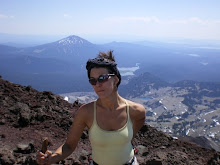With all the buzz about the new shoes that claim to burn more calories and tone your muscles, we wanted to see what the truth was about this new magic shoe. Will it really give you a Better Body? Or maybe too good to be true? All of the above are publicized claims marketing the latest toning shoes from Skechers Shape-Ups, MBT (MasaiBarefoot Technology) and Reebok EasyTone. The shoes, each of which uses uniquely shaped rounded soles and extra cushioning to alter the wearer’s normal walking gait, are currently all the rage in footwear. A quick Web search reveals many blogs touting the shoes and NFL great Joe Montana has even been hired as a pitchman for one of the brands. With all this buzz about toning shoes, it was time to put their claims to thetest. So we enlisted a team of exercise scientists from the Exercise and Health Program at the University of Wisconsin,La Crosse, to study each of the shoes.
The basic theory behind how they are supposed to work makes sense to consumers, so it’s easy to see why many are quick to embrace—and purchase—the shoes, which range in price from $100 to $245. The common denominator is that they all have an unstable sole design, which forces the wearer’s body to constantly struggle to find an equilibrium or balance point.
The Study
To test the effectiveness of the shoes and evaluate their claims, a team led by Porcari, John Greany, Ph.D., Stephanie Tepper, M.S., Brian Edmonson, B.S., and Carl Foster, Ph.D., designed a pair of studies, one evaluating exercise responses to walking in traditional athletic shoes (a New Balance running shoe) versus the popular toning shoes. The second study evaluated muscle activation when walking in regular athletic shoes compared to toning shoes.
The shoe order was randomized as the subjects were asked to walk at 3.0 mph with a 0% grade hill; 3.5 mph/0% grade; and at 3.5 mph/5.0% grade. Meanwhile researchers monitored each subject’s oxygen consumption, heart rate, ratings of perceived exertion (RPE) and caloric expenditure. Researchers used electromyography (a.k.a. EMG) to record muscle activity in six muscle areas: calf, quads, hamstrings, buttocks, back, abs, as subjects walked in each of the four pairs of shoes.
The Results
Across the board, none of the toning shoes showed statistically significant increases in either exercise response or muscle activation during any of the treadmill trials. There is simply no evidence to support the claims that these shoes will help wearers exercise more intensely, burn more calories or improve muscle strength and tone.
The Bottom Line
“Don’t buy these shoes because of the claims that you’re going to tone your butt more or burn more calories. That’s absolutely wrong,” says Porcari. Then how do researchers account for the anecdotal evidence (found on blogs, etc.) from those who wear the shoes and claim their muscles get sore, which must mean the shoes are working? “Do you feel different when you’re wearing these shoes?
Of course you do because you’re walking on probably an inch worth of cushioning,” explains Porcari. “They feel different, and that’s why when people first wear them
they’re probably going to be sore because you’re using different muscles. But if you wear any sort of abnormal shoes that you’re not used to wearing, your muscles are going to get sore. Is that going to translate into toning your butt, hamstrings and calves? Nope. Your body is just going to get used to it.” Bryant isn’t surprised by the findings: “When you think about it, it’s kind of the same old song and dance,” he says. “People will still fall prey in their search for the quick and easy fitness solution. These shoes are just another attempt to find that magic bullet.”
These shoes may be encouraging a fair number of people who probably wouldn’t put on a normal pair of walking shoes and go out and walk, to do so because they think they’re getting some super toning effect. It’s probably serving as a bit of a motivator to get a group of inactive individuals to at least get up and get moving. And, no matter how you spin it, that’s a good thing.
Click Here for more info and the study in full
Thursday, August 5, 2010
Subscribe to:
Comments (Atom)
